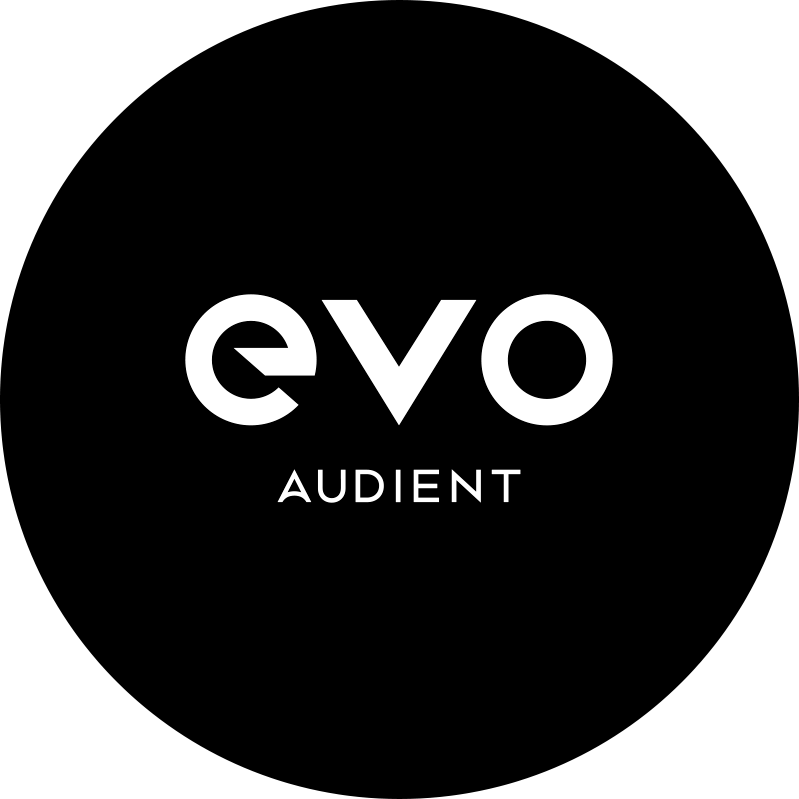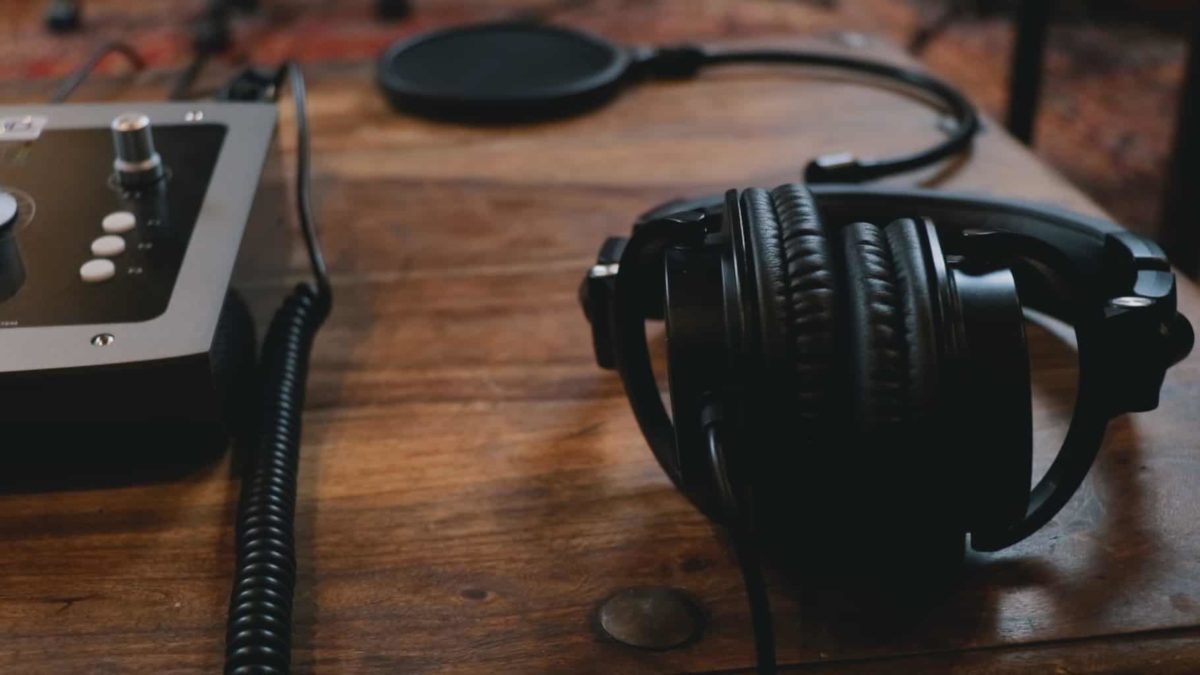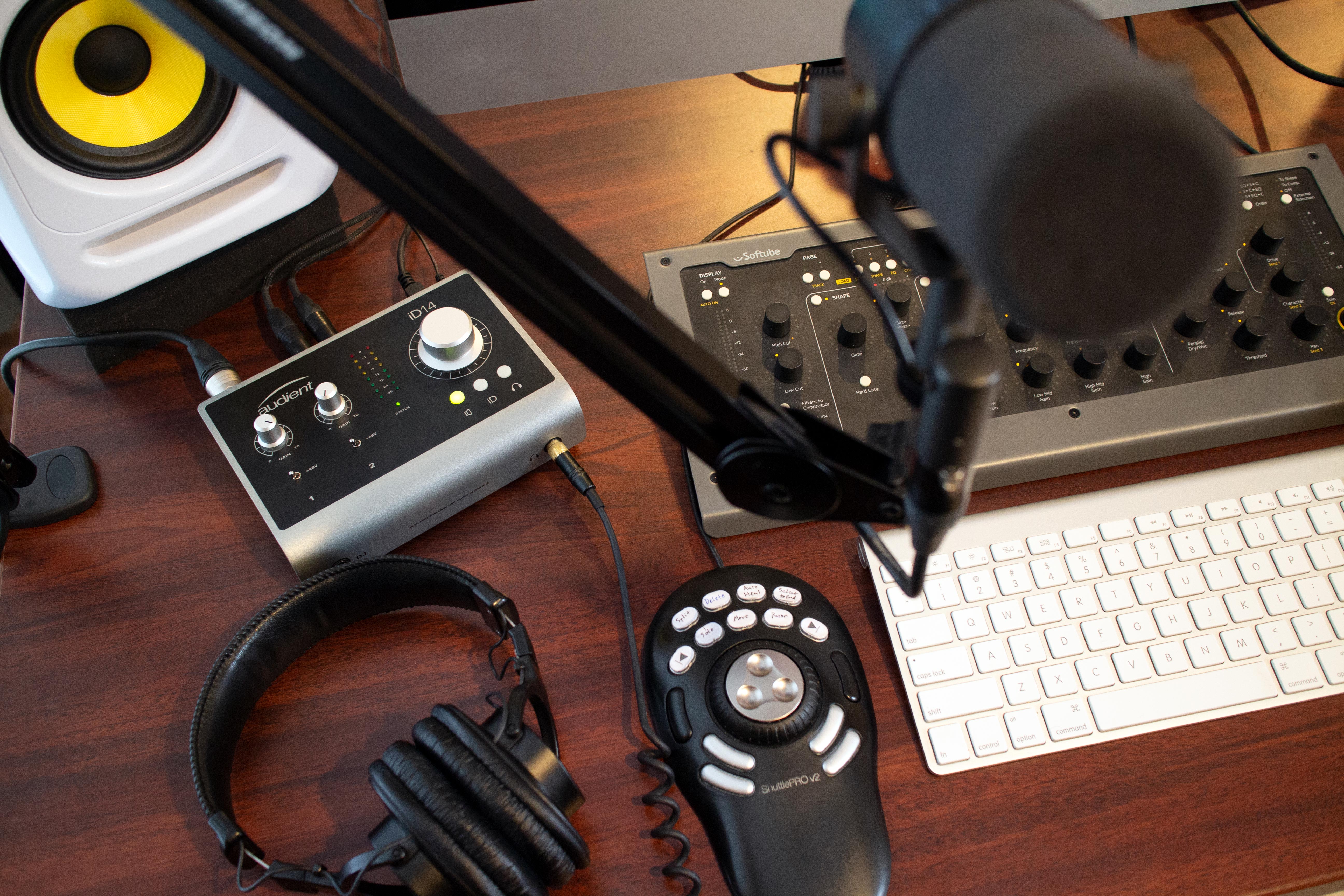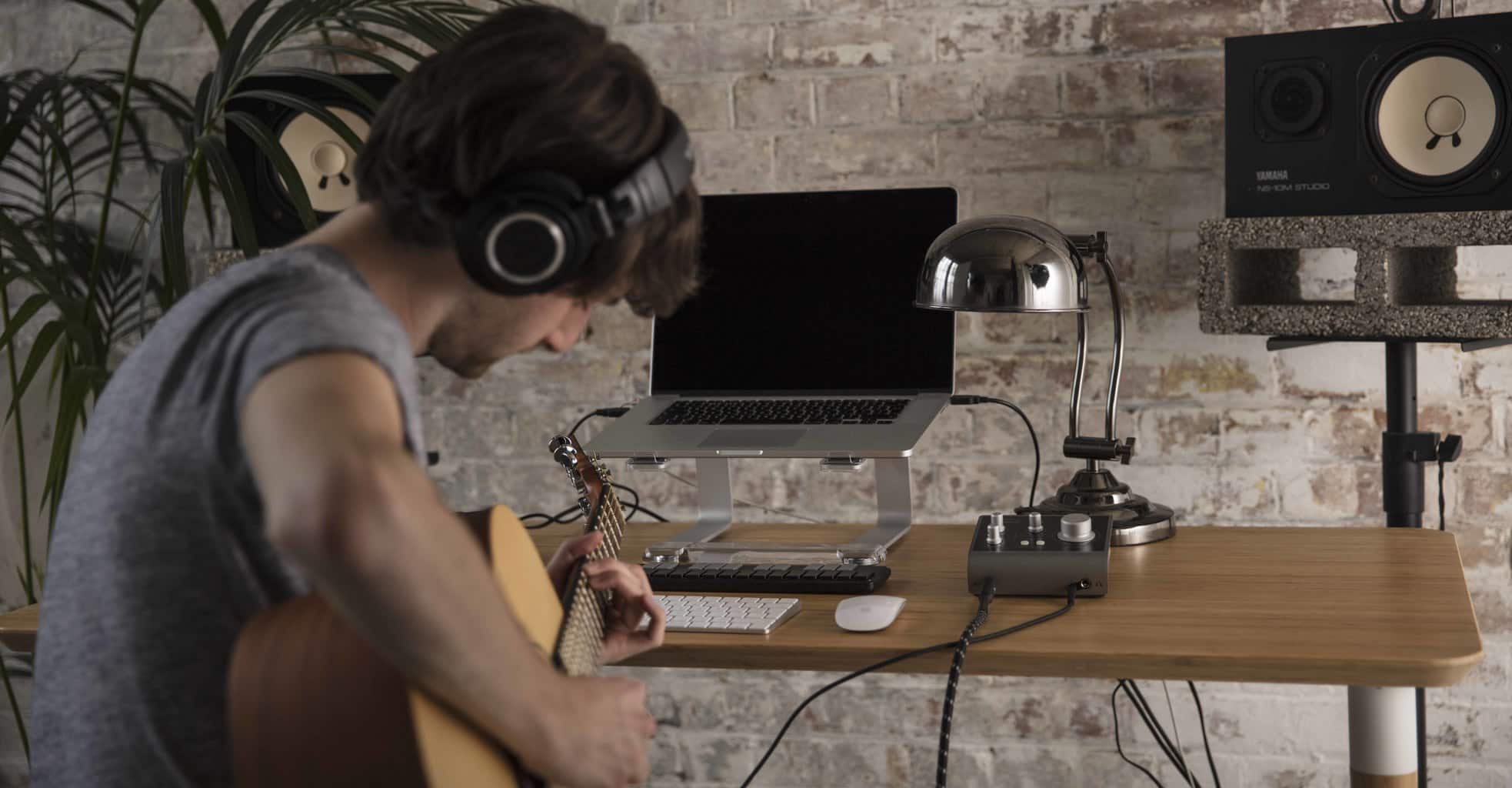With four ADAT connections round the back, the EVO 16 enables the seamless addition of up to 16 more inputs and 16 more outputs to its already-sizeable channel count. But what, exactly, is ADAT, and how can it help you improve your studio workflow? Let’s start at the beginning…

Written by EVO
What is ADAT?
Back in the day, when the software DAW was but a dream and the involvement of the personal computer in music production was limited to MIDI sequencing, a multitrack tape deck of some kind was central to any recording studio. It might be funny to think it now – given the ever-growing number of tape emulation plugins on the market aimed at bringing it back – but in the analogue era, the saturation and noise of electromagnetic tape was seen as nothing but an annoyance, to be actively minimised using expensive components and noise reduction circuitry.

In 1992, to rapturous acclaim, American music technology manufacturer Alesis at last made truly pristine, noise-free digital multitrack recording a reality for home and professional studio owners alike with the release of the ADAT (Alesis Digital Audio Tape) eight-track tape machine. Although other digital multitrack systems (by Sony et al) were available at the time, being prohibitively expensive, they were beyond the reach of all but the most well-funded facilities. Not only was the ADAT deck itself comparatively cheap (at about $4000), so were the consumer-grade S-VHS cassettes that were loaded into it. You could also link and sync multiple ADATs for up to a whopping 128 tracks of recording and playback, making it an impressively scalable platform, and one that qualified as genuinely democratising – a major milestone in the development of the home studio.
Fast forward 30 years and the ADAT machine has long gone the way of the dodo, as hard disk recorders, then Mac- and PC-based DAWs largely consigned both analogue and digital tape to the audio history books. However, the optical I/O connection port (and its associated fiberoptic cable) by which ADAT machines passed signals to and fro has maintained its utility over the years, as a means to digitally stream up to eight discrete channels of audio between compatible devices. Your EVO 16 interface, of course, is one such device.

How does ADAT work?
The ADAT Optical Interface, or Lightpipe – as said port/cable combo is known – is actually an adaptation of Toshiba’s 40-year-old TOSLINK consumer electronics standard, which is still widely employed in home cinema and gaming setups for sending digital audio signals from BluRay players, game consoles, set-top boxes, TVs, etc, to AV receivers and soundbars. The technology is surprisingly straightforward: an analogue audio signal is converted to a stream of digital bits by the sending device, and that stream is then relayed by a very rapidly flashing LED to an optical receiver in the destination device, where it’s converted back to an analogue signal for output through an amplifier.
For their implementation, Alesis simply scaled the format up from two (stereo) to eight channels at 24-bit/48kHz, with the later addition of Sonorus’ S/MUX bit-splitting technology enabling the sample rate to be increased at the expense of channel count: four channels at 96kHz or two channels at 192kHz. Crucially, by facilitating all this through that ubiquitous square TOSLINK port, the company made ADAT an attractively low-cost addition for any audio device manufacturer looking to build it into their hardware, which has kept it wholly relevant to this day.

What can I do with the ADAT ports on my EVO 16?
The EVO 16 features two ADAT inputs and two ADAT outputs, each one capable of sending or receiving up to eight channels of unidirectional audio over any TOSLINK cable. This makes it possible to dramatically expand your I/O options with the addition of extra external preamps and output converters.
By connecting the Audient ASP800 and/or ASP880 (or any other ADAT-equipped mic preamp) to the EVO 16’s ADAT Ins, for example, you can record up to 24 channels at once – that’s enough to close-mic a small orchestra! And going in the other direction, hook up a multichannel analogue converter box or two to the EVO 16’s ADAT Outs and you can enjoy a whopping 24 physical channels of output to your mixing desk or console.
One of the best things about ADAT – and a by-product of its pre-DAW-era origins and overall technological simplicity – is the almost totally frictionless process of setting it up. All you have to do is make the cable connections between the EVO 16 and your ADAT-equipped devices, and specify one of them as the master clock source in the EVO 16’s software control panel. With that done, the connected preamps and converters essentially become fully integrated extensions of your EVO 16 system.
Should you need it, the EVO 16 also includes a BNC word clock input for syncing multiple clocks; and S/PDIF format audio signals are supported, too – good to know in case you ever find yourself working with one of the very few pro audio devices that still use them.
When eight inputs and/or outputs just aren’t enough, the additional I/O provided by the EVO 16’s quartet of ADAT ports give you a huge amount of expansion potential, whether you’re looking to record with more microphones or output your DAW projects to a 16- or 24-channel analogue desk for detailed mixing.
Related Articles
With four ADAT connections round the back, the EVO 16 enables the seamless addition of up to 16 more inputs and 16 more outputs to its already-sizeable channel count. But what, exactly, is ADAT, and how can it help you improve your studio workflow? Let’s start at the beginning…

Written by EVO
What is ADAT?
Back in the day, when the software DAW was but a dream and the involvement of the personal computer in music production was limited to MIDI sequencing, a multitrack tape deck of some kind was central to any recording studio. It might be funny to think it now – given the ever-growing number of tape emulation plugins on the market aimed at bringing it back – but in the analogue era, the saturation and noise of electromagnetic tape was seen as nothing but an annoyance, to be actively minimised using expensive components and noise reduction circuitry.

In 1992, to rapturous acclaim, American music technology manufacturer Alesis at last made truly pristine, noise-free digital multitrack recording a reality for home and professional studio owners alike with the release of the ADAT (Alesis Digital Audio Tape) eight-track tape machine. Although other digital multitrack systems (by Sony et al) were available at the time, being prohibitively expensive, they were beyond the reach of all but the most well-funded facilities. Not only was the ADAT deck itself comparatively cheap (at about $4000), so were the consumer-grade S-VHS cassettes that were loaded into it. You could also link and sync multiple ADATs for up to a whopping 128 tracks of recording and playback, making it an impressively scalable platform, and one that qualified as genuinely democratising – a major milestone in the development of the home studio.
Fast forward 30 years and the ADAT machine has long gone the way of the dodo, as hard disk recorders, then Mac- and PC-based DAWs largely consigned both analogue and digital tape to the audio history books. However, the optical I/O connection port (and its associated fiberoptic cable) by which ADAT machines passed signals to and fro has maintained its utility over the years, as a means to digitally stream up to eight discrete channels of audio between compatible devices. Your EVO 16 interface, of course, is one such device.

How does ADAT work?
The ADAT Optical Interface, or Lightpipe – as said port/cable combo is known – is actually an adaptation of Toshiba’s 40-year-old TOSLINK consumer electronics standard, which is still widely employed in home cinema and gaming setups for sending digital audio signals from BluRay players, game consoles, set-top boxes, TVs, etc, to AV receivers and soundbars. The technology is surprisingly straightforward: an analogue audio signal is converted to a stream of digital bits by the sending device, and that stream is then relayed by a very rapidly flashing LED to an optical receiver in the destination device, where it’s converted back to an analogue signal for output through an amplifier.
For their implementation, Alesis simply scaled the format up from two (stereo) to eight channels at 24-bit/48kHz, with the later addition of Sonorus’ S/MUX bit-splitting technology enabling the sample rate to be increased at the expense of channel count: four channels at 96kHz or two channels at 192kHz. Crucially, by facilitating all this through that ubiquitous square TOSLINK port, the company made ADAT an attractively low-cost addition for any audio device manufacturer looking to build it into their hardware, which has kept it wholly relevant to this day.

What can I do with the ADAT ports on my EVO 16?
The EVO 16 features two ADAT inputs and two ADAT outputs, each one capable of sending or receiving up to eight channels of unidirectional audio over any TOSLINK cable. This makes it possible to dramatically expand your I/O options with the addition of extra external preamps and output converters.
By connecting the Audient ASP800 and/or ASP880 (or any other ADAT-equipped mic preamp) to the EVO 16’s ADAT Ins, for example, you can record up to 24 channels at once – that’s enough to close-mic a small orchestra! And going in the other direction, hook up a multichannel analogue converter box or two to the EVO 16’s ADAT Outs and you can enjoy a whopping 24 physical channels of output to your mixing desk or console.
One of the best things about ADAT – and a by-product of its pre-DAW-era origins and overall technological simplicity – is the almost totally frictionless process of setting it up. All you have to do is make the cable connections between the EVO 16 and your ADAT-equipped devices, and specify one of them as the master clock source in the EVO 16’s software control panel. With that done, the connected preamps and converters essentially become fully integrated extensions of your EVO 16 system.
Should you need it, the EVO 16 also includes a BNC word clock input for syncing multiple clocks; and S/PDIF format audio signals are supported, too – good to know in case you ever find yourself working with one of the very few pro audio devices that still use them.
When eight inputs and/or outputs just aren’t enough, the additional I/O provided by the EVO 16’s quartet of ADAT ports give you a huge amount of expansion potential, whether you’re looking to record with more microphones or output your DAW projects to a 16- or 24-channel analogue desk for detailed mixing.





